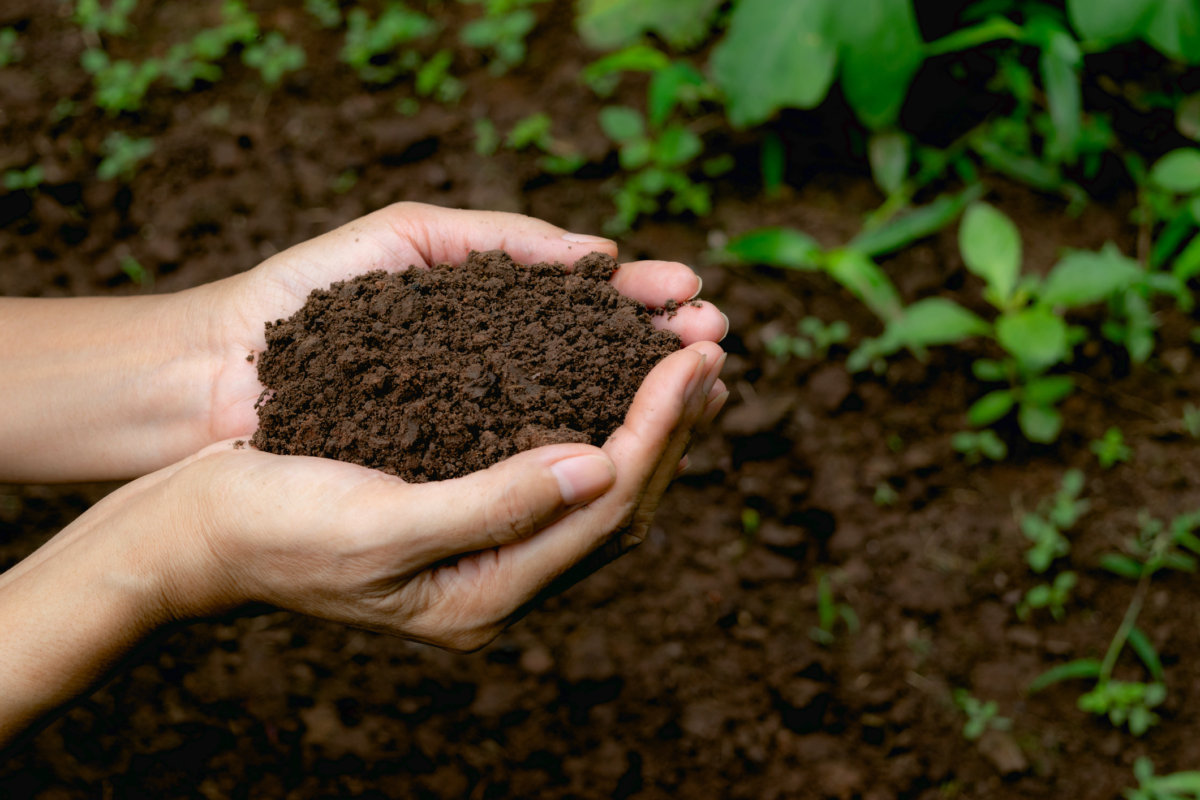
Would you like the plants in your landscape to grow better? Follow these 7 tips to build soil health.
Our approach at In Harmony focuses on building healthy soil, which is vital for plant health. Healthy plants lead to a landscape that is sustainable and easier to maintain.
A recent article in Fine Gardening has great tips for how to “Put the Life Back into Your Soil.” The article focuses on how to support the diverse web of life in your soil. As the author Bob Schindelbeck says, “The more we learn about the organisms that live in this hidden ecosystem, the more we understand the profound positive impact that biological activity has on soil’s physical structure and plant health.”
Here are the article’s 7 tips to build soil health.
1. Give it some air
About half of typical garden soil is pore space, which can be occupied by water or air. If you till the soil too much, you can fill in pore spaces. This is especially true if your soil is silt- or clay-based. If you walk on soil when it’s wet, you can compact it and fill in pore spaces. Avoid overworking the soil, and stay off it when it is wet.
2. Feed your soil naturally
Add organic debris such as compost, grass clippings and organic mulch. Soil-dwelling organisms will break it down, improving soil texture and making nutrients available to your plants.
3. Avoid overfertilizing
Use organic fertilizer, not synthetic fertilizer, and don’t use too much. Plants that are overfed are not robust, making them more susceptible to pests and drought stress. Excess fertilizer will wash off and pollute nearby water bodies.
4. Till as little as possible
If you till deeply, you will kill and displace millions of beneficial organisms. A better approach is to add compost, grass clippings or other plant residues on the soil surface, or dig them into just the top few inches of soil. “The soil biota will take care of breaking the material down into nutrients your plants can use, and moving the nutrients down into the soil where plant roots can find them,” Schindelbeck wrote.
5. Consider your soil texture
Almost half of average soil is composed of mineral solids. Your soil likely includes stone fragments, sand, silt and clay. You can’t change your soil’s mineral texture, but you can improve it by adding organic matter.
- Sandy soil tends to drain water too quickly. Organic matter can help it hold water.
- Silty soil is more productive when it has organic matter to help it avoid compaction.
- Clay soil tends to hold too much water. Organic matter can help loosen it up. This allows water to drain and air to enter.
6. Help your soil crumbs
“The next time you dig up a plant, look closely at the soil clinging to its roots,” Schindelbeck wrote. “You will see that the soil particles are structured into crumbs, also called aggregates, of varying sizes.” Feeding your soil with organic matter will help aggregates stay loose. This allows air and water to enter the soil and also helps new roots to grow.
7. Grow lots of plants
Bare soil is not healthy soil. Grow a mix of plant species, so soil organisms have food. They will recycle nutrients and leave residues that your plants can use.
“So try to keep a lot of different plants growing in your garden,” Schindelbeck wrote. “If you have a bare bed, consider a cover crop. If you have a spot that’s mostly mulch, here’s your excuse to buy more plants. You can even claim that the weedy spot behind the garage is a soil restoration project—the science is there to back you up!”
More info
Read the full article, “Put the Life Back into Your Soil,” summarized in this blog post.
One of our blog posts, “Soil is alive,” describes the soil food web in detail.
Another blog post talks about how ideas about soil health have changed over the last quarter century.
A soil test can provide useful information on what nutrients your soil needs, its acidity and the organic matter content. This blog post talks about how to test your soil.

Love it!
Good job, Annette!
Thanks! I’m glad you like it!